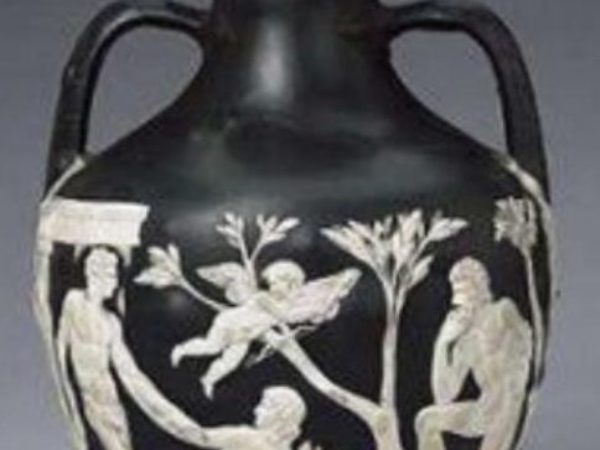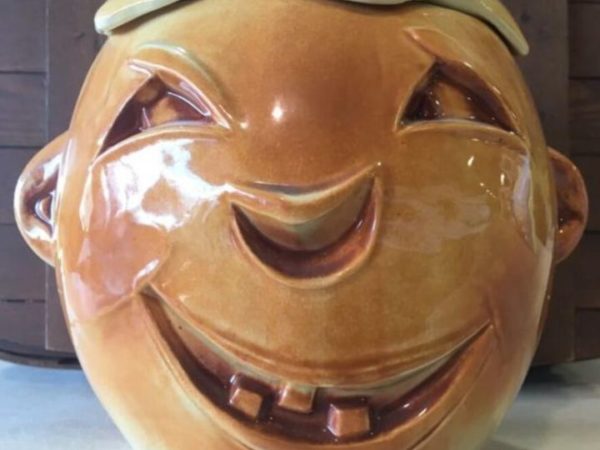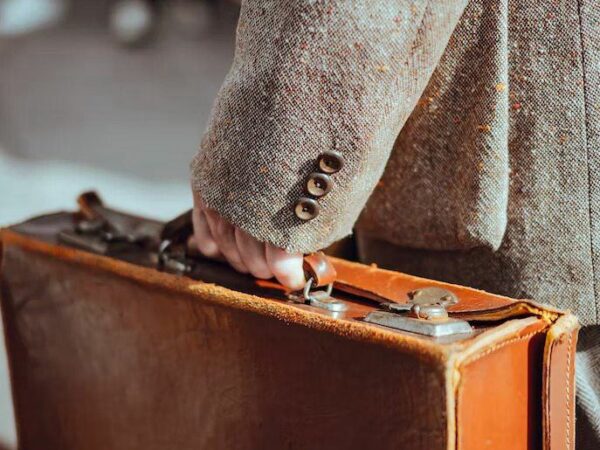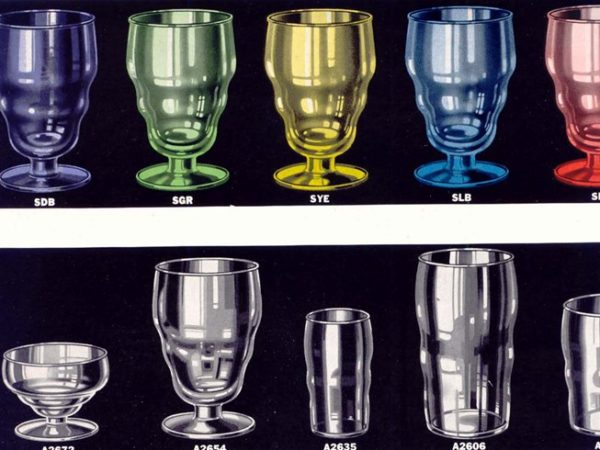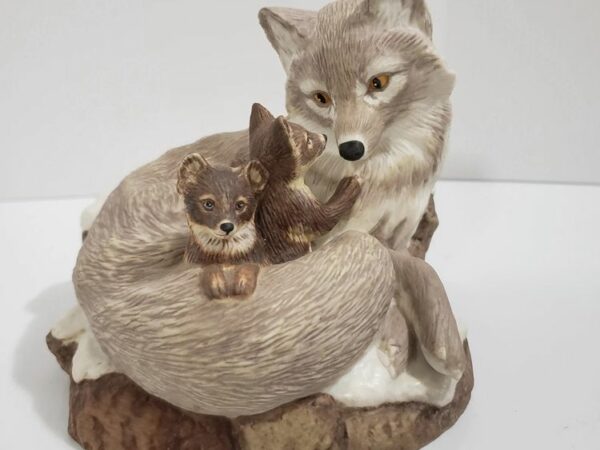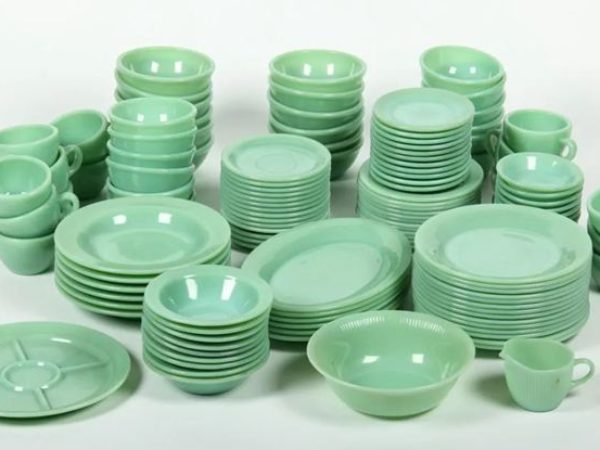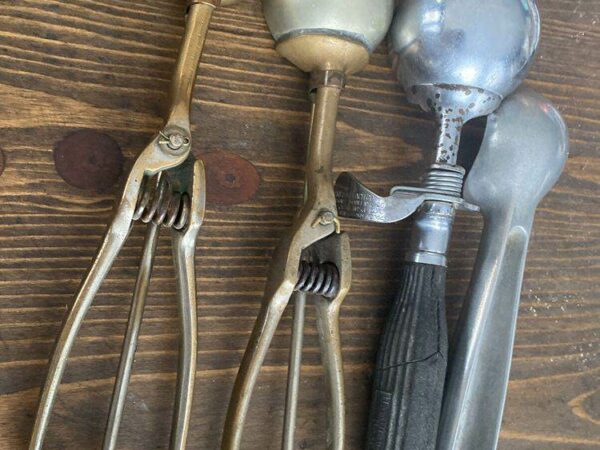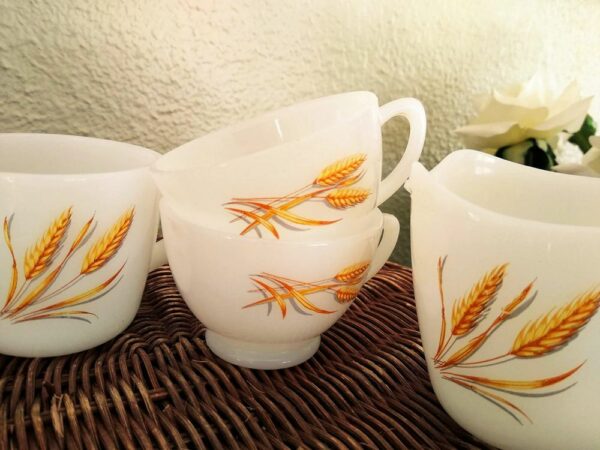For most people, drinking tea is more than a routine; it is a lifestyle, and antique teacups help make tea time always enjoyable. These tiny containers are desirable for many reasons.
The world’s most expensive teacup is a 3-inch cup from the Chenghua Emperor of the Ming Dynasty (1465-1487). This teacup costs $36 million and is considered the holy grail in China’s art history. Even regular Antique teacups are quite pricey; there are those that range between $20-$100 and several others that cost as much as $1000; these cups are rare or in mint condition.
We’ll be exploring the world of antique teacups, their values, and how to identify their unique patterns, so, free to join us.
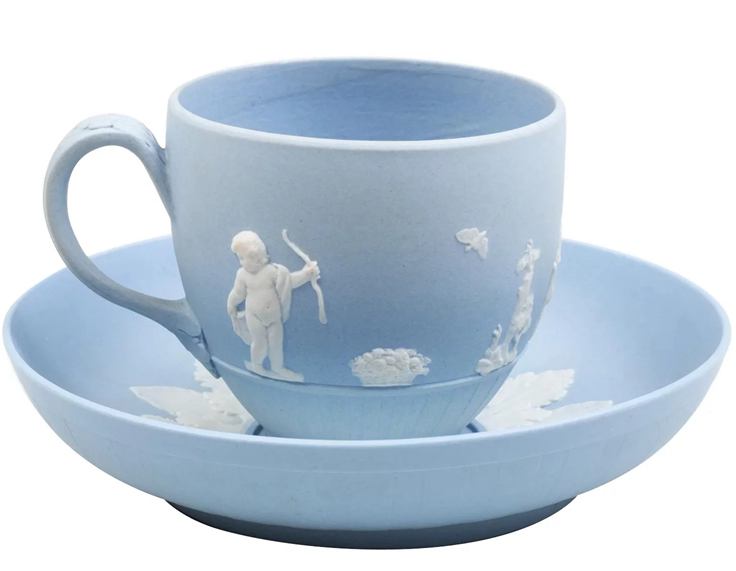
Table of Contents
The History of Antique Teacup
Teacups have been an integral part of Chinese society since 220 AD. However, they were slow to gain popularity in Europe, at least not until the early 17th century. Before then, people took tea from small bowls.
The Chinese had no issues with sipping their tea from bowls. Still, when tea got into Europe, the pewters, silver nobles, and kings had trouble drinking tea from said bowls because the hotness of the tea burned their hands.
For this reason, porcelain cups had to come to the rescue.
Check out this video for an interesting story about tea and teacups.
10 Most Valuable Antique Teacups in the World
Here’s a detailed list of the ten most valuable antique teacups globally.
We’ll like to state that this list isn’t a reflection of existing lists, as our facts and figures are culled from verified online stores and antique websites.
No. |
Names |
Release Date |
Price |
1 |
The Chenghua Period Chicken Cup |
1465-1487 |
$36 Million |
2 |
Raphael Service Imperial Porcelain Set (Nicholas II Period) |
1894-1917 |
$86,500 |
3 |
Ottoman Sultan Murad Sevres Tea Service Set |
1876 |
$76,274 |
4 |
Vincennes Bleu Celeste Teacup and Saucer |
1753-1754 |
$8,125 |
5 |
Cozzi Teacups and Saucers |
1770 |
$4,710 |
6 |
Henry Van De Velde Teacup and Saucer |
1903-1904 |
$3,690 |
7 |
Meissen Porcelain Teacup and Saucer Set |
1740-1745 |
$2,624 |
8 |
Paragon Teacup and Saucer |
1940-1950 |
$2,400 |
9 |
Imari Handpainted Spode Tea Set |
1815 |
$1892.16 |
10 |
Soviet Porcelain Teacup |
1924 |
$949 |
1. The Chenghua Period Chicken Cup
Release Date: 1465-1487
Price: $36 million
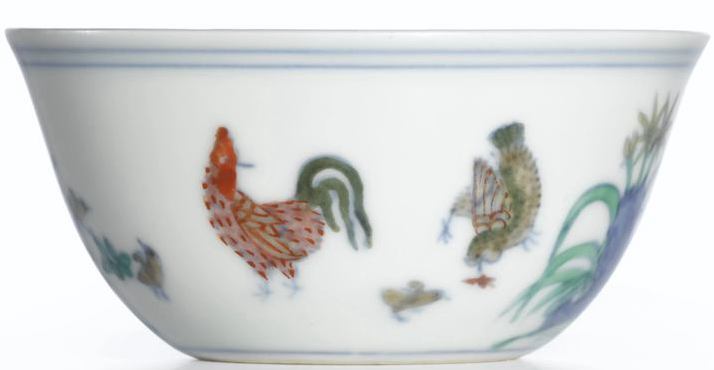
Standing tall at the top of the list is the most distinguished porcelain cup in Chinese art history. Here we have a Chenghua Period Chicken cup created in a time when quality was unmatched and unprecedented.
Chicken cups are popular for their incredible artistry, bubbly colors, and quality build. They signify the rarest and finest example of Chinas rich ceramic history.
2. Raphael Service Imperial Porcelain Set (Nicholas II Period)
Release Date: 1894-1917
Price: $86,500
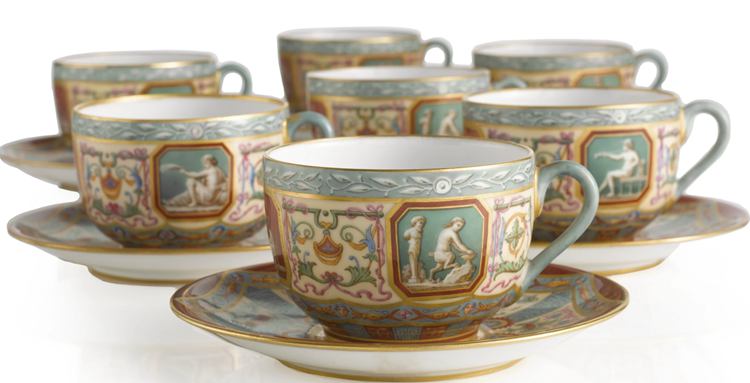
In this set, both cups and saucers were painted in neoclassical motifs and featured the gilt Slavonic imperial cipher of Nicholas II of Russia. The Raphael service was considered the biggest and most important service manufactured by the imperial porcelain factory.
3. Ottoman Sultan Murad Sevres Tea Service Set
Release Date: 1876
Price: $76,274
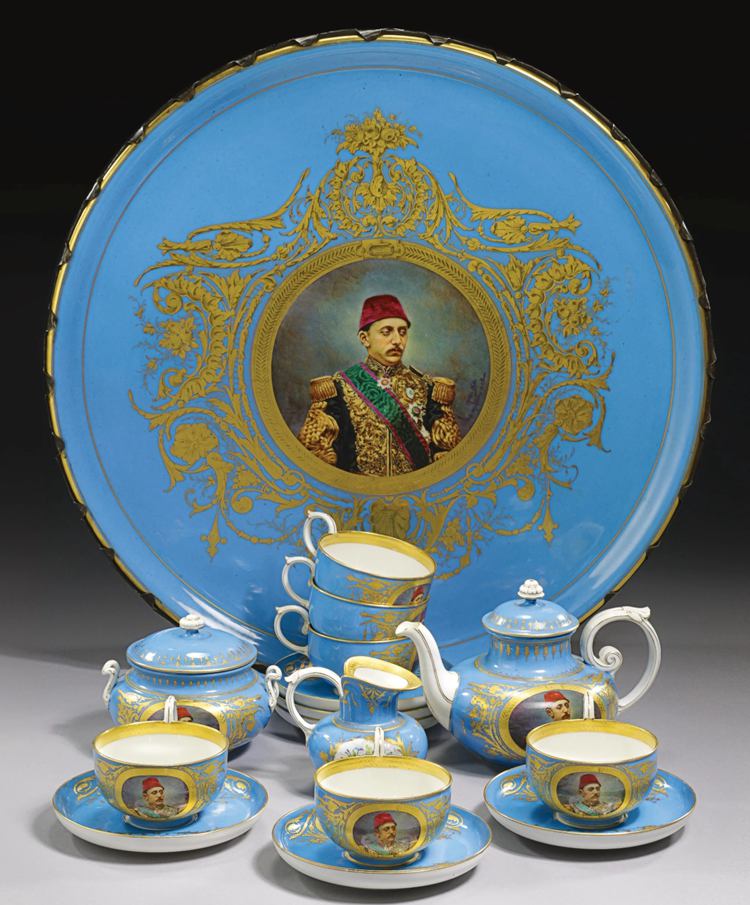
This set was specially produced for Sultan Murad of the ottoman empire, who reigned for only ninety-three days. This original design does not exist anywhere else.
The tea set contains six teacups and saucers, a teapot, a sugar bowl, a creamer, and a tray. Each is painted in the luxurious shade of Azure blue and white, with gold accents.
4. Vincennes Bleu Celeste Teacup and Saucer
Release Date: 1753-1754
Price: $8,125
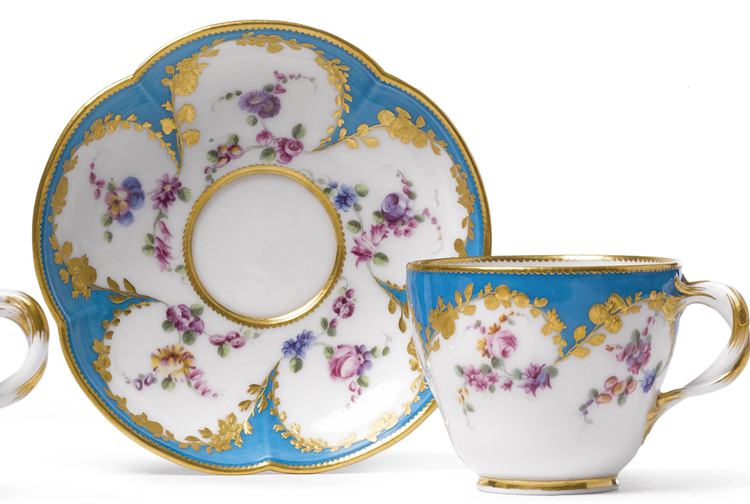
Each teacup and saucer in this piece is painted with a bleu celeste scalloped border with tooled gilt floral garland and colorful floral details. The union of blue, purple, and golden hues provides a futuristic twist to the design in this piece.
5. Cozzi Teacups and Saucers
Release Date: 1770
Price: $4,710
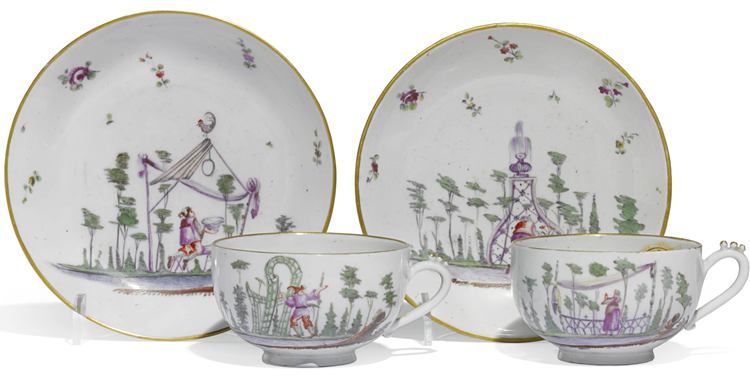
The hand-painted piece reflects a pallet dominated in a hue of green and purple with the presence of lakes in elegant gardens. There’s an influence of the gazebo on the creation of the painting too.
6. Henry Van De Velde Teacup and Saucer
Release Date: 1903-1904
Price: $3,690
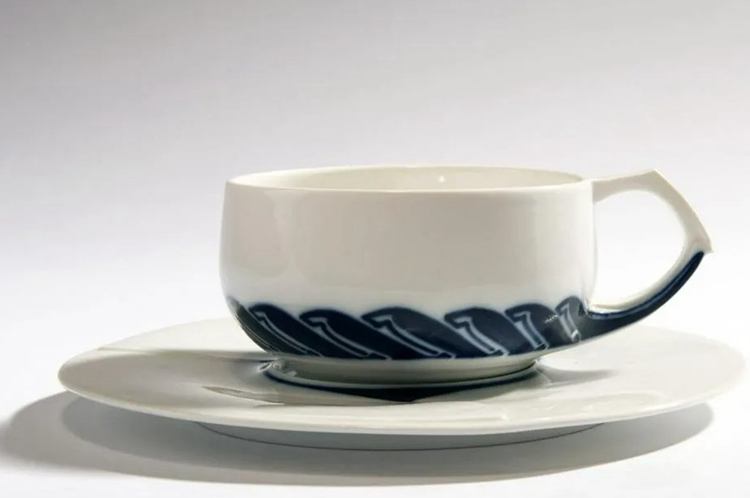
Henry Van de Velde designed this teacup and saucer set circa 1903-04. It features an elegant white glazed porcelain coat and blue underglaze details beneath the cup. This set is pretty rare.
7. Meissen Porcelain Teacup and Saucer Set
Release Date: 1740-1745
Price: $2,624
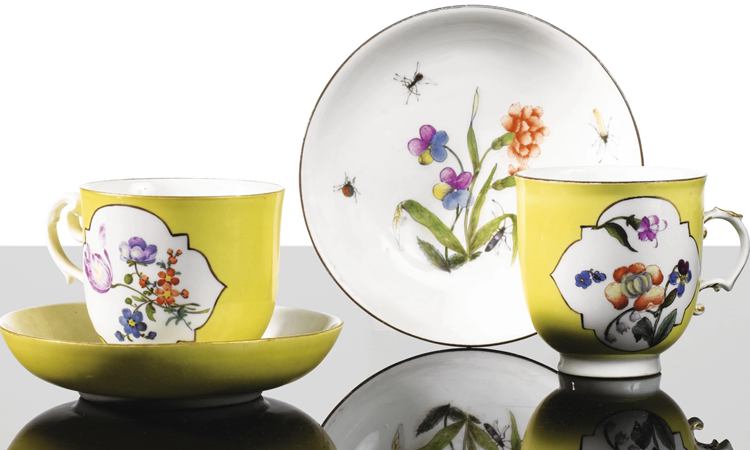
Here, we have a 17th-century Meissen Porcelain tea with yellow flower bouquets and insects on a yellow background. Meissen yellow pieces are popular and more successful than any other teacup from other European factories.
8. Paragon Teacup and Saucer
Release Date: 1940-1950
Price: $2400
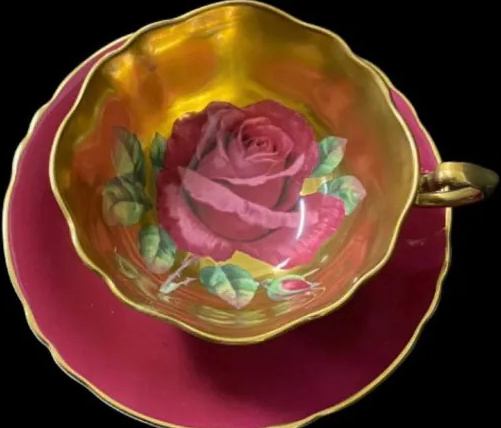
This paragon teacup with heavy gold coating and a prominent rose design sold for an impressive $2400 at a Monction auction house. The Paragon China company produced English bone China in the early 1900s, although the brand was later discontinued in the 1990s.
9. Imari Hand painted Spode Tea Set
Release Date: 1815
Price: $1870.99
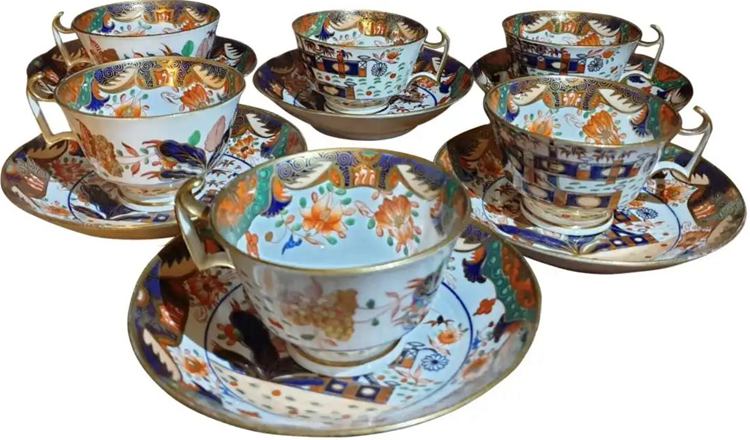
This is an early 19th-century porcelain teacup set. Both the cups and saucers are hand-painted with bamboo and Peony. It was manufactured by the Spode company in the United Kingdom.
Also, the bright orange and blue colors make this an excellent dining tableware.
10. Soviet Porcelain Teacup
Release Date: 1924
Price: $949
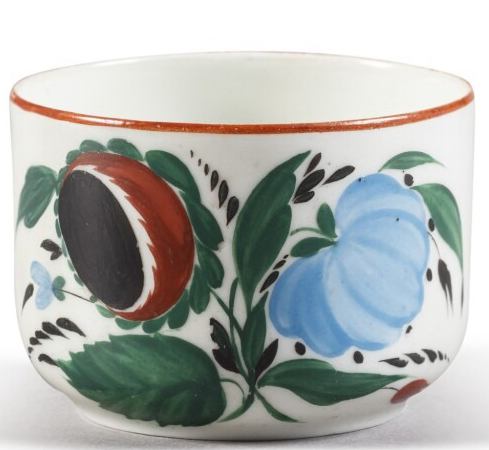
This Soviet Porcelain teacup designed by Sergei Chekhonin is from a private collection in France. On the cream body of this cup are stylized flowers with a red border. You can find Dolkhlov’s initials and signature written in black on the bottom of the piece.
How to Identify Markings on Antique Teacups
Each marking on an antique teacup represents something. However, identifying and recognizing these markings is where the bulk of the job lies. Let’s show you how to do it like the pros
Get Credible Information on the Manufacturer
Many companies have always marked their items a certain way or with a peculiar symbol to prevent imitation and reproduction.
A typical example is the Royal Doulton company which marks its pieces differently every year. Even with the varying markings, the company’s name topped with a lion and a crown always remained constant.
The company’s names are always found on these markings and back stamps, which will help you further research the piece.
Find out the Production Year
Teacups were made for different purposes. Some were intended for memorial services, while others were limited editions. Check the back stamp for information on the year the company used the marking or updated it.
Affirming the year of production can also help you understand how old the teacup and mark production year.
Identify the Teacups’ Place of Origin
You can also easily identify markings on your antique teacup through their place of origin, following the McKinley tariff act imposed on imported goods in the United States around 1890. The tariff act ordered that all imports carry the name of the production country.
Lookout for a Logo
Inspect the base of your China or porcelain teacups for the artist’s signature, special initials, logo, or anything that may be tied to the maker’s identity. Remember that the marking must be from the original artist and not a distributor unless the purpose is defeated.
Get an Appraiser Involved
Seek the assistance of a specialist or an antique inspector to help you properly identify the markings on your teacups if you find it hard to verify the authenticity of the markings.
Appraisers have experience, and their wealth of knowledge on everything antique will help them in deducing the artist, country of origin, and pattern history.
Here’s a video showing a professional appraiser on duty.
Unmarked Pieces
You may be wondering if unmarked pieces have any value. Of course, they do. Marking a piece or not does not always affect the quality of your teacups. This is because most companies purposely decided not to mark their goods, especially earlier models.
Unmarked pieces are easy to spot by their appearance. They’re usually messy and unprofessionally crafted.
How to Determine the Value of Antique Teacups
You don’t have to guess the worth of your piece anymore randomly. Here, we have laid out the steps to take and factors to consider that will ultimately help you answer your question on the worth of your antique teacups.
Engage the Services of a Professional Appraiser
This is the ultimate way to determine the value of your antique teacups. Although they might cost you a few bucks, appraisers are the perfect bridge between a collector and his target market.
Take your pieces to them for proper observation and valuation.
Check out some of these appraisers.
Their years of experience and acquired skills enables them to recognize even the best reproduced antique items at a glance. If you’re a greenhorn in the antique world, pair up with an appraiser to make the most of your antique pieces.
Decipher the Age of Your Piece
Older teacups, as expected, are more pricey than new ones. This is majorly due to the tedious production techniques, which have surprisingly produced the most stable and strong version of teacups.
To correctly determine the age of your antique teacup, examine the bottom of the teacup.
Depending on the production year, look out for these two things.
- Cups made before the 1800s typically have handwritten marks beneath them.
- For cups post-1850, you’ll discover letterings, stamped logos, and numbers that are usually not blue.
Very old teacups like those made 100-200 years ago are top among the most valuable pieces.
Identify the Makers Mark
You would be stunned at the kind of power a name can have on buyers and collectors. Over the years, quality and accountability have been attached to specific brand names.
This is also one of the reasons why you must conduct extensive research on the maker of your piece before going in for the big sale to have a glimpse of how much it’ll cost or if it’s a good decision to sell-off.
Here’s a list of popular makers of antique teacups
- Royal Albert
- Royal Stafford
- Royal Doulton
- Wedgwood
- Stanley
- Paragon
- Shelley
- Spode
Research the Pattern’s Name
Many collectors are ready to dole out plenty of cash on a piece if it’s in the pattern they require. To find out the name of any pattern, check the manufacturer’s website.
Determine the Item’s Weight
We advise you to hold the antique teacup in your hands, examine the weight, and grasp its authenticity. Old teacups are usually lightweight and fragile; some even have hairline cracks.
If the teacup is too heavy, too new, and has little to no sign of age or wear, you’re most likely holding a reproduced model. Pieces like this will hardly fetch you a reasonable price.
Compare Prices
Check recent auctions, websites, and online sale platforms for the current sale prices of antique teacups. Doing this will give you an idea of its worth before putting it up for sale.
Checking these prices and comparing them will let you strike a balance and not compromise the true worth of your antique teacup.
Determine the Extent of Rarity of the Item
The rarity of the pattern, shape, or model of the antique teacup largely affects its intrinsic value. If you have a limited-edition model in your hands or a celebratory piece, they’ll already be out of circulation or only a few pieces will be left; making them rare and highly collectible.
So, we do advise every collector to embark on intense research on whichever model or pattern is in their possession, as it might just be their next claim to fame.
Understand that the Items Condition Affects its Value
The neater and more complete your teacup parts are, the more value it holds. Teacups with cracks, chips, crazing, or worn-out paint are not for collectors, and no one will even buy them from you.
However, flea bites and age marks are gotten from years of storing them in the house=. You must understand that this is harmless and might even help boost the collector’s interest in the item, as these are healthy signs of aging and quality.
Always check the inside of your teacup for staining; half the time, these stains don’t usually come off, or they take extreme cleaning. Either way, you should see it first before the buyer does.
Understand Market Forces
For some people, getting their teacups with a matching saucer to make a set is their most preferred choice. Just make sure the stamps on the bottom of the teacup and the saucer match the patterns.
Some prefer subtle patterns, plain cups, or a single piece. Either way, when it comes to placing value on antique teacups, the beauty is usually in the eyes of the beholder, and they will only drop money on whatever tickles their fancy.
Examine the Item and Determine Whether it is a Reproduction or Not
Reproduced pieces are bad for business and hold no tangible value. Here are a few ways to recognize reproduced pieces.
They are usually heavier than normal antique teacups, and the painting on their bodies barely wash off. This is because reproduced antique teacups were designed to withstand multiple washing processes and stay vibrant and sharp no matter the situation.
Authentic antique teacups will always give an appearance of faded paint due to years of keeping and moving around.
So, this is the final thing you must cross-check to confirm the authenticity of your piece and ultimately determine the value.
Where to Sell Old Tea Cups
Here’s a list of places you can sell your old teacups.
Online Stores
Popular E-market platforms like eBay, Etsy, and Amazon have served as the perfect place for antique owners to meet buyers.
One advantage of trading on these platforms is the wide exposure they give your product. You have the opportunity to reach a wider range of buyers across the region and worldwide.
In addition to this, these platforms also give you the freedom to boost the views your product gets through ads and promotions.
Online Antique Shops
There are dozens of online stores dedicated especially to the sales of antique teacups. Here, you have a variety of styles (English, European, and French), and you can choose whatever tickles your teacup fancy.
Here’s a list of sites to visit:
Auction Websites
Auction websites work in a similar manner to traditional auctions.
However, here the process is seamless as you only need to upload clear and detailed images of your product and get people to bid. The highest bidder gets to buy the item, and you don’t even have to see eye to eye to get this done.
Sites like
- Liveauctioneers,
- 1STDibs,
- Rubylaneand
- Sotheby’sare dedicated to auctioning antique items. They have successful and positive reviews from dealers.
Auction prices are usually higher than normal due to the competition between bidders and potential customers.
Antique stores
You can also choose to walk into any trusted physical antique store and drop your item off for sale.
Since several people go into antique stores to shop or inquire about old stuff; if you’re lucky enough, your product may catch someone’s fancy, and who knows you could sell it off for a mouthwatering amount.
Flea Markets
Antiques sell for way cheaper at flea markets and here, there are several varieties. All you need to do is locate the nearest flea market and find a stall to display your wares. We promise that a collector or an interested buyer will find you.
Yard or Estate Sales
Unarguably the easiest of them all, this process only requires you to run everything from the comfort of your home and open your doors for buyers to come home. Set a stall in your yard or garage and sell away.
Craft Fairs
You can get your booth and display your antique teacups for antique stuff like a trade fair. Entry is limited to prevent too much competition. It is usually on a first-come, first-serve basis, requiring you to pay a separate fee to buy your space.
Antique Shows
This is a mini-exhibition for antique dealers and collectors to trade ideas. It’s also a great means for exposure and meeting plenty of potential customers all at once. This is mostly the recommended option for new and upcoming antique collectors.
How To Care for Antique Teacups
Cleaning and caring for your antique teacups are one of the most important processes in collecting them. You must do this to extend their shelf life, maintain aesthetics and keep them for generations to come.
The first and the most important thing is to protect them from dust, grease and loose particles, else, they’ll dull the colors on your plate and clog the patterns.
When washing, always do it with warm water and a mild detergent that’s effective enough to cut through the toughest dirt, but also protect the paint on your antique teacups.
After washing, rinse them with warm water and carefully place them in a glass cupboard with a steady surface so they won’t trip over and break.
Always remember that ceramic and porcelain cups react very harshly to excessive conditions- be it hot or cold. Hence, you must protect your wares from direct sunlight or high humidity.
Parting Words
As we promised, now you not only know the top most valuable antique teacups, you also now know how to tell authentic ones from the fake. In addition to this, you have a broad idea on places where you can sell your antique teacups.
Here are some important tips to remember.
- In the world of antique teacups, the condition of the teacup is very crucial. They’re breakables and this makes them prone to flea bites, cracks, and chips.
- Legit antique teacups are mostly lightweight; any extra weight or unusual heaviness means it’s a reproduction.
